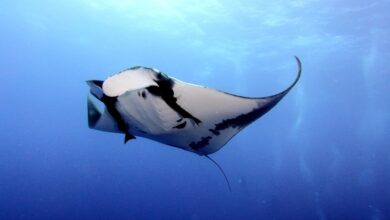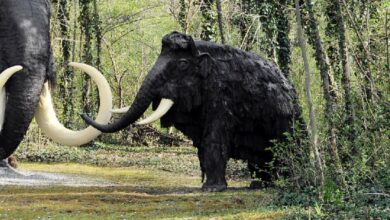A creature with almost mythical qualities lurks beneath the surface of the waterways and dense forests of eastern Australia. The platypus is a creature that defies the rules of animal life. It has webbed feet, like those of a frog. Its bill is similar to a duck’s. And its venom can be as powerful as a snake’s. The platypus is one of the most unusual animals in the world. It’s a living puzzle which has intrigued scientists, Indigenous Peoples and nature lovers.
The Land of the Platypus – Australia’s Waterways & Wilds
For a better understanding of the platypus, one must visit its natural habitat. The platypus lives primarily in freshwater creeks and rivers scattered along the east coast, from Tasmania’s temperate rainforests to Queensland’s subtropical swamps. The waterways of Australia are shaded by eucalypts, dense bushland and sunlight that filters through the canopy.
The platypus thrives in these calm aquatic environments. It digs intricate burrows on riverbanks to hide from predators. It slips into the water at dusk and becomes a master of stealth, agility, and foraging in murky depths.

The unique anatomy of the Platypus – Nature’s masterpiece of evolution
The platypus was once a puzzle to the first European scientists who encountered it. Its four webbed feet, which help it swim but can be folded back on land for digging claws, are a paradox of nature. Imagine a mammal with a pattern of different species. Its body is covered in dense, waterproof fur that insulates against cold water. On land, its webbed feet fold up to reveal sharp claws to dig. And it has an unusual bill, which is soft, leathery and packed with electrodes to allow it to detect even the faintest electrical signals from prey underwater.
Its bill is unique in the animal kingdom. It may look like a duck bill, but it’s a highly specialised sensory organ. The platypus hunts in dark, silty riverbeds where its vision is limited. It closes its ears and nose and only uses its bill. It can detect electrical impulses produced by shrimp, insect larvae and freshwater worms. This allows it to catch food with amazing precision.
The venomous spur on the hind legs of males adds to the mystique. The venom from this small, sharp spur is capable of inflicting severe pain on potential rivals or threats during the breeding season. The venom of the platypus, while not fatal to humans, is a reminder that it is just as fierce as it is gentle.
The platypus, one of the few mammal species in the world to lay eggs, is also a courting animal. After careful courtship, she digs her nesting burrow and lays the eggs. She then incubates these with great care. After the eggs hatch, a mother will nurse her young using milk secreted by her mammary glands. However, without nipples, the milk pools on special patches of skin that the hatchlings can lick up.
The Platypus and Australian Aboriginal Culture – A Spiritual Connection
Indigenous Australians knew a lot about this creature long before European scientists did. They had many stories and deep knowledge. The platypus is a sacred animal to many Aboriginal tribes. It’s a part of their Dreamtime, an ancient spiritual framework that explains the origins and history of the land.
The platypus represents duality and balance for some Indigenous groups. It is both a bird and a mammal, and it embodies both land and water. Its uniqueness represents the interconnectedness between all living things and the delicate harmony that sustains ecosystems. The platypus is a resourceful and clever creature, revered for its adaptability.
Scientific Discovery and Mysteries: The Platypus in Evolutionary History
Naturalists in Britain were astonished and sceptical when European explorers brought the first platypus back to Britain at the end of the 18th century. Was it a fake? This bizarre creature was it a chimera made from different animal parts? The combination of traits from birds, mammals and reptiles is unlike anything else previously described.
Scientists today recognise the platypus to be a monotreme, a mammal that dates back over 100 million years. Monotremes, the only group that lays eggs rather than giving birth to living young, inherited this trait they inherited from their reptile ancestors. Together with echidnas, the platypus represents an evolutionary bridge that provides important clues about how mammals have evolved over geological history.
Even more surprises have been revealed by genomic studies, including genes that are related to venom and electroreception. These genes highlight its unique biology. Scientists are still researching the platypus, eager to discover how it survives in its ecological niche.

Ecological Role of the Platypus: An Indicator Species
It is not just a strange animal, but it plays an important role in the ecosystems of freshwater. It is a nocturnal predator that helps to control the populations of aquatic invertebrates. This contributes to the health of rivers and streams.
Its absence or presence is also an indicator of the health of the environment. The platypus is a species that requires clean waterways in order to survive. Monitoring its population can provide insight into human activities such as land clearing, water removal, pollution and climate change.
Conservationists have raised alarms in recent decades about the destruction of habitats and declines in water quality that threaten the platypus population. There are efforts underway to protect riparian areas, reduce pollution and maintain sustainable flows of water to ensure these enigmatic animals continue to grace Australian river systems for generations to come.
The Human Connection: Conservation and Fascination
People around the world are fascinated by the platypus. Its quirky appearance, elusive behaviour and unique Australian heritage make it a symbol. In Australia and elsewhere, platypus exhibits are available in zoos and wildlife parks. This gives visitors a rare opportunity to see this shy animal at close range.
The platypus is a rare sighting, and one that’s best enjoyed by those who are patient enough to wait quietly on the riverbanks in the early morning or late evening. The platypus represents Australia’s unique biodiversity, and the need to protect the environment that supports such life.
There are many educational programs, citizen science projects, and ecotourism initiatives that have been developed to raise awareness and foster stewardship. The platypus enriches science and inspires greater respect for nature’s delicate interdependencies.
A Living Legend
In a world increasingly dominated by urban sprawl and environmental changes, the platypus is a testament to Nature’s ingenuity and resilience. This creature is both familiar and fantastical, challenging our understanding.
The platypus, which swims silently below the surface of Australian rivers, invites us all to take a moment, slow down and look more closely at the incredible diversity of life that exists on Earth. The platypus reminds us of the brilliance of nature, even when it appears in unexpected forms.




